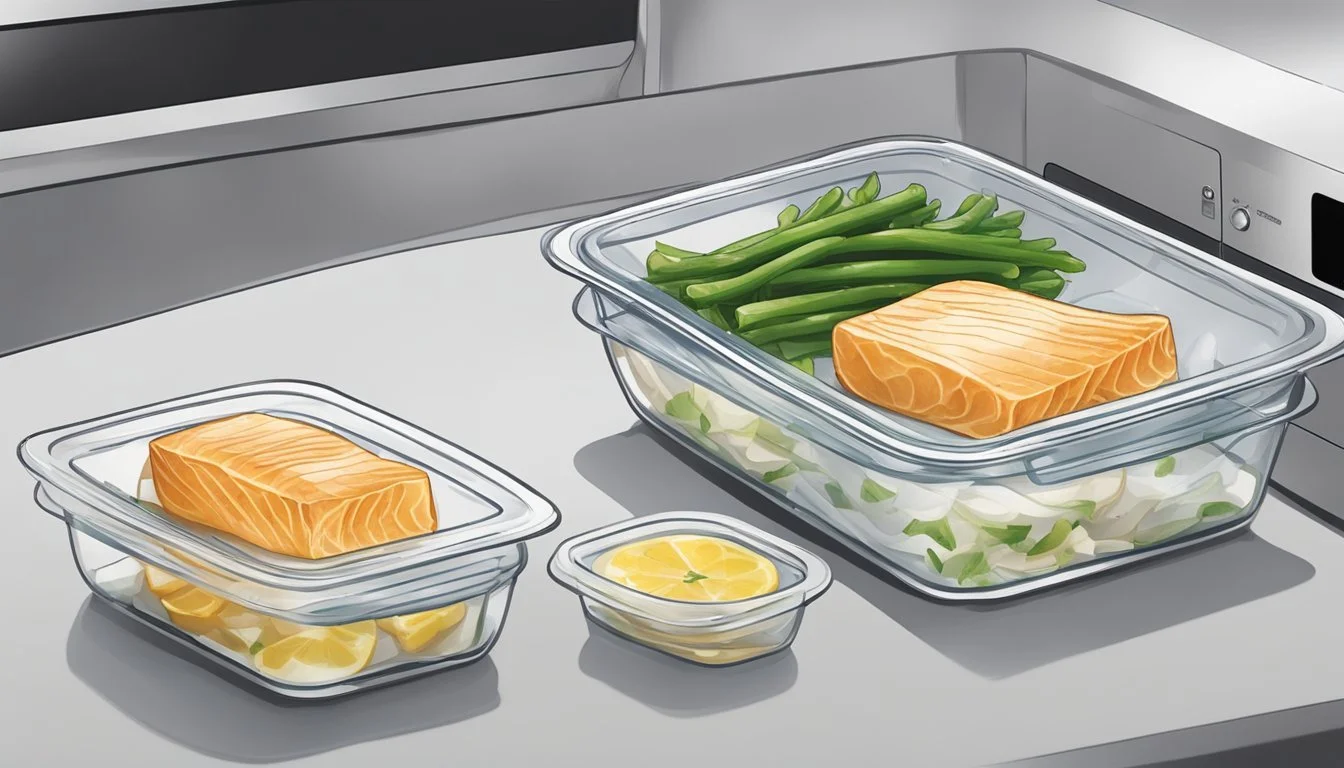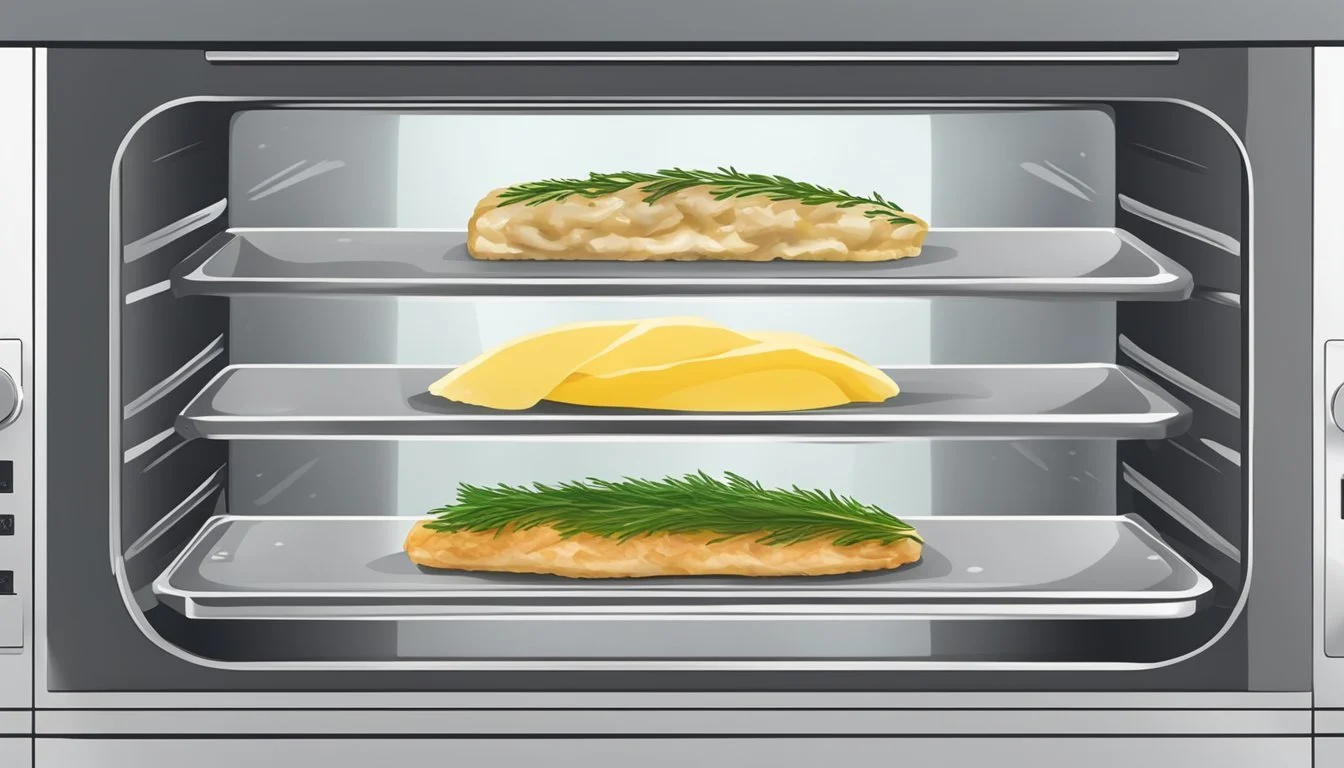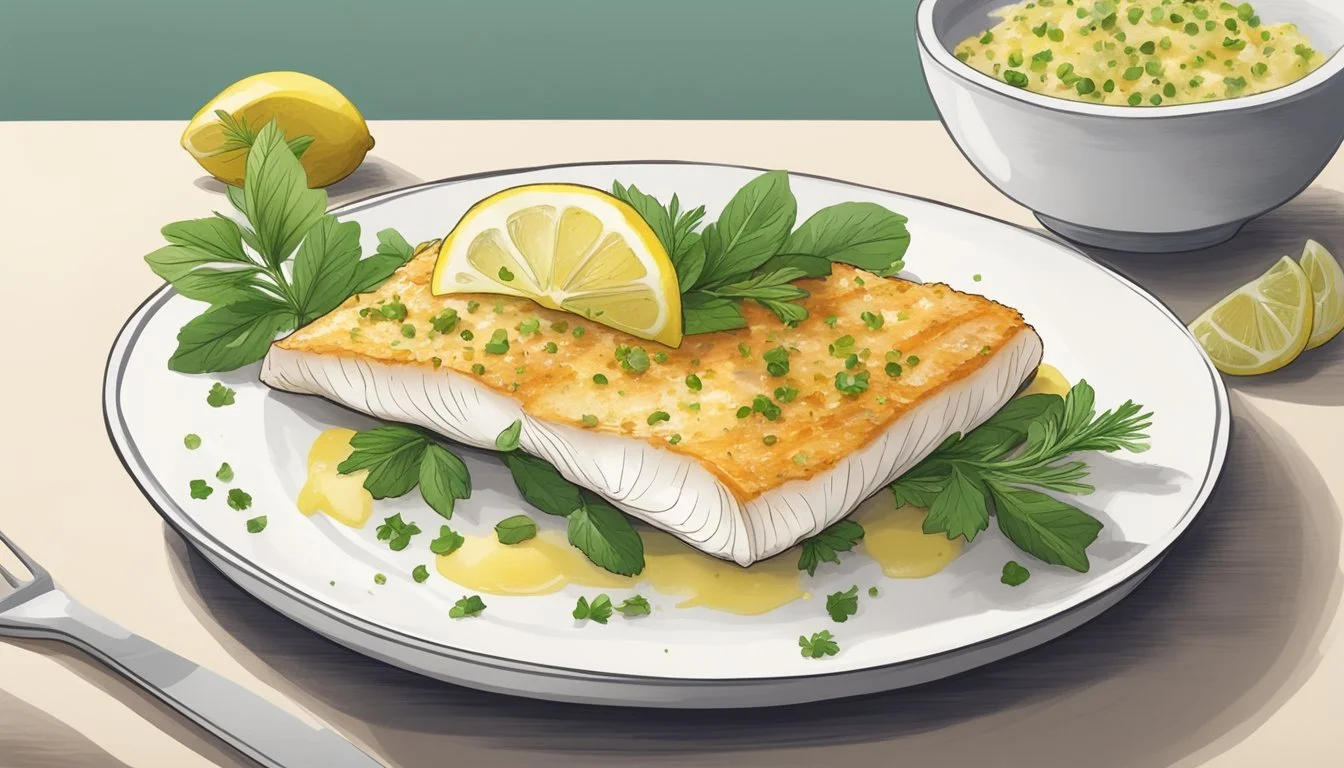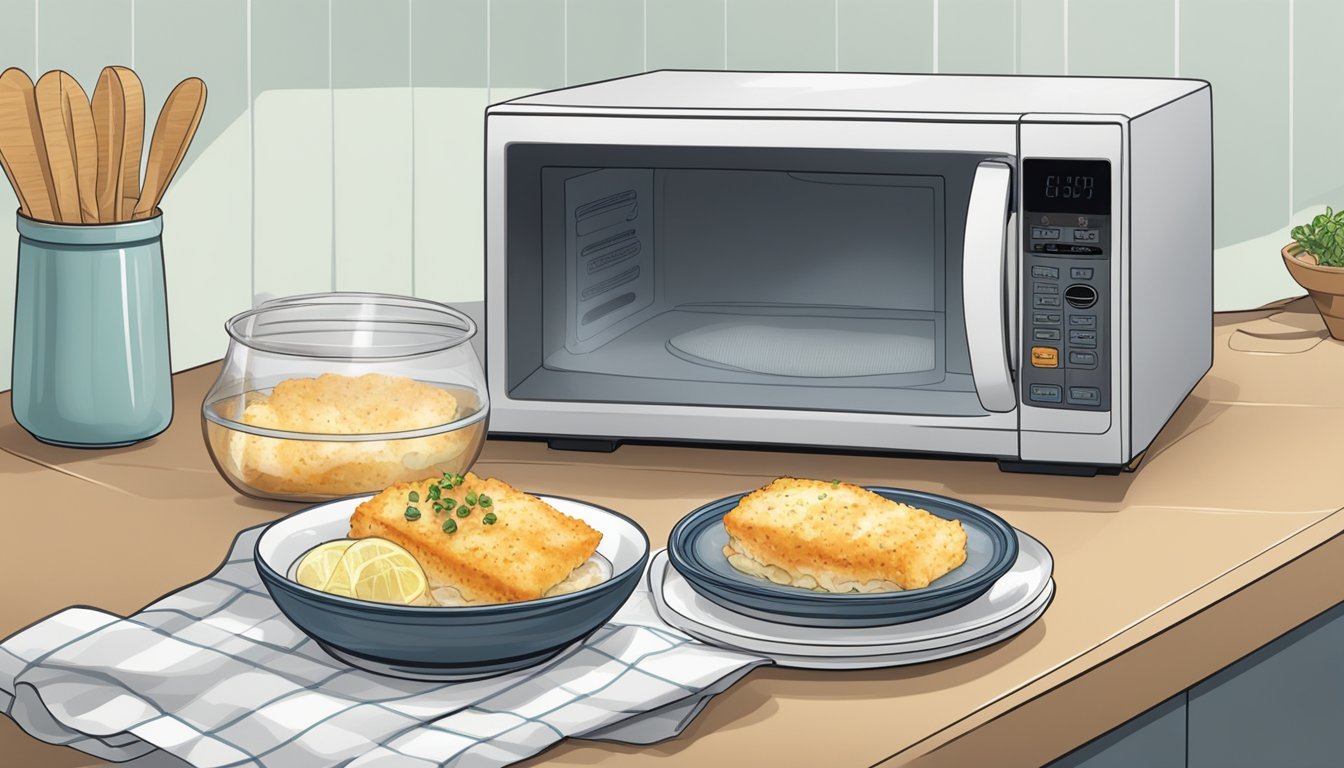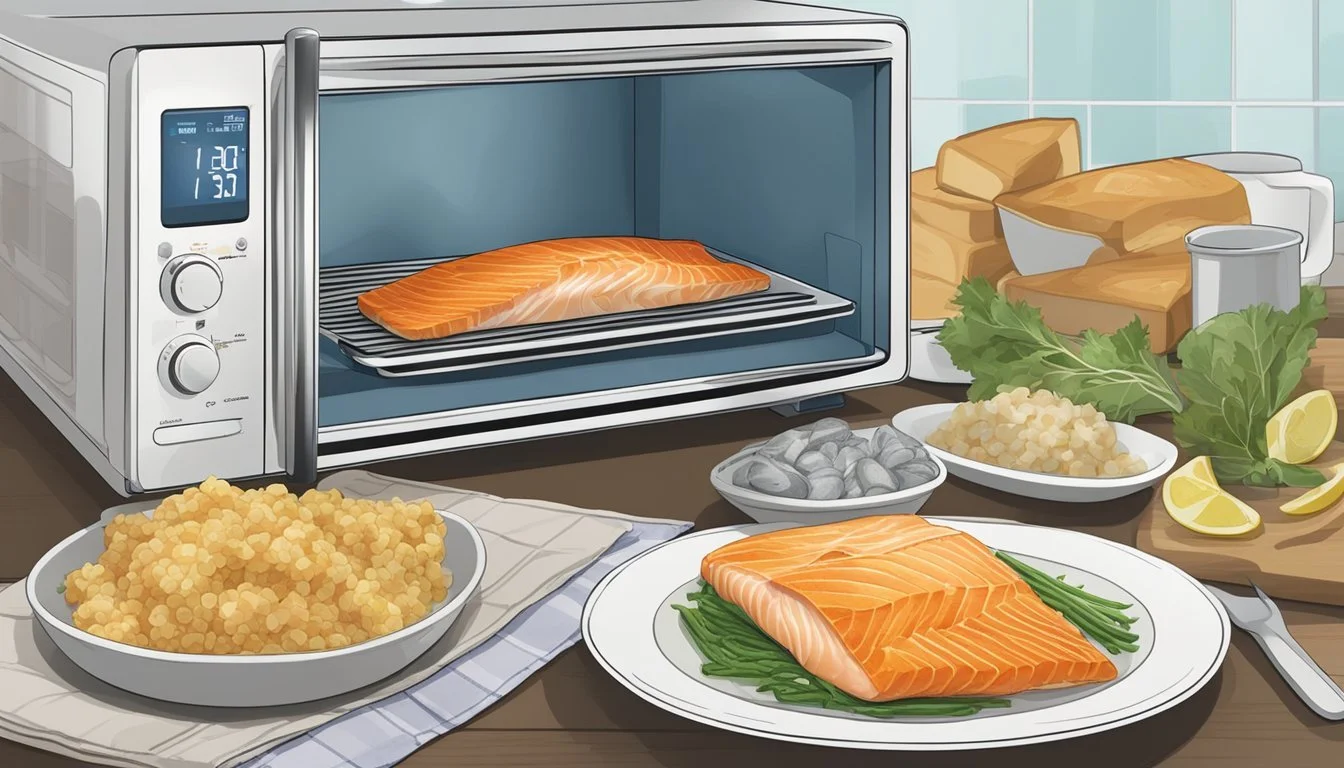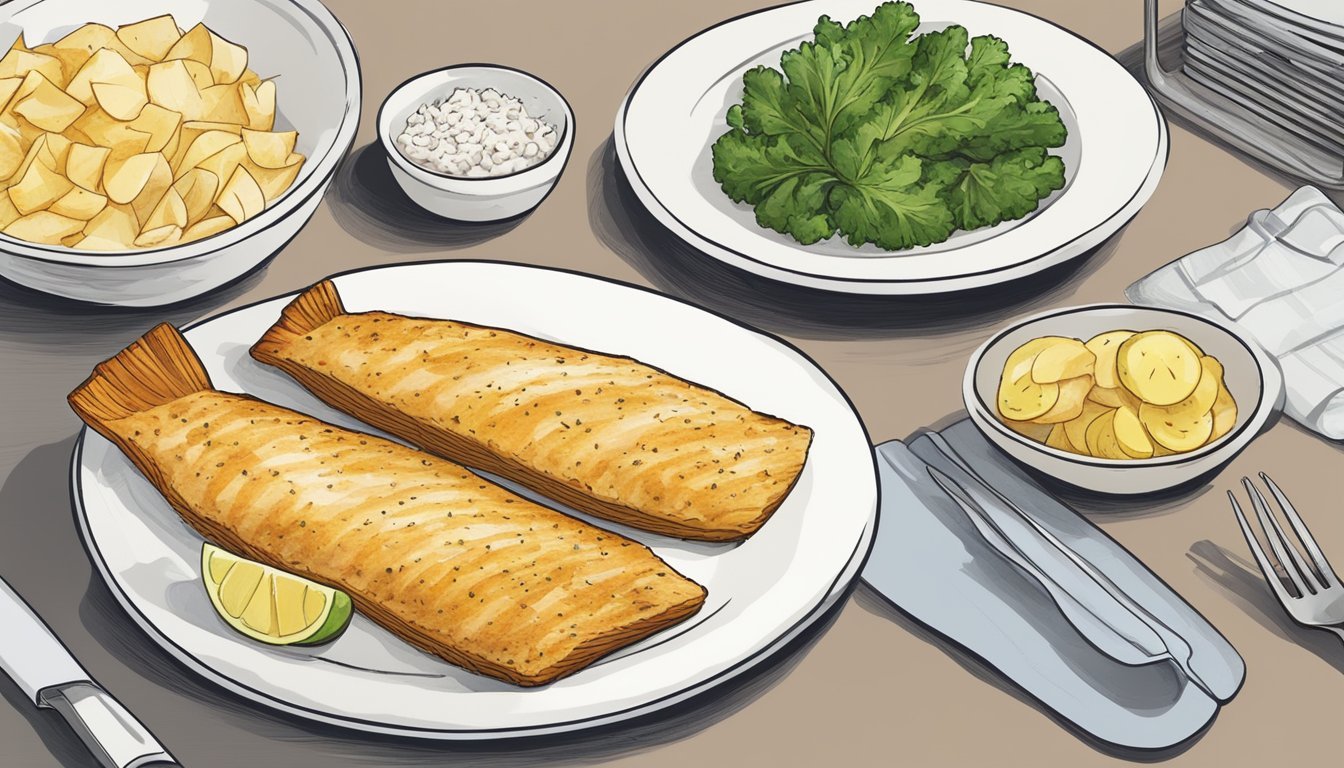How to Reheat Gluten-Free Cod Fillets
Best Methods and Tips
Reheating gluten-free cod fillets can be a delicate task, but with the right method, you can enjoy them just as much as the first time they were cooked. Whether using an oven, microwave, or stovetop, ensuring the cod remains moist and flavorful is key.
Ensuring the cod fillets are properly stored in an airtight container is the first step. When ready to reheat, preheat the oven to 350°F and place the cod on a baking sheet lined with parchment paper. Covering the dish with aluminum foil helps retain moisture.
For quicker methods, the microwave is an option. Using a damp paper towel to cover the cod, reheat in short intervals on a low power setting. This prevents the fish from drying out and maintains its tender texture.
Understanding Gluten-Free Baking
Gluten-free baking can be challenging due to its unique ingredient requirements and the need to replicate the texture and flavor of traditional baked goods. This section explores the main gluten-free ingredients and the benefits of gluten-free cod fillets.
Gluten-Free Ingredients Overview
Gluten-free baking requires alternatives to traditional wheat-based flours. Common substitutes include almond flour, coconut flour, and rice flour. Each flour imparts different textures and flavors.
Almond flour is nutrient-dense with a subtle nuttiness, making it ideal for both sweet and savory dishes.
Coconut flour absorbs more liquid than other flours, necessitating adjustments in recipes. It adds a mild coconut flavor but can lead to dry textures if not used properly.
Rice flour offers a more neutral taste and is often combined with other flours to improve texture and crumb.
Binding agents like eggs, xanthan gum, and psyllium husk are essential. Eggs provide structure and moisture, while xanthan gum and psyllium husk replace gluten's elasticity, preventing crumbling.
Gluten-free breadcrumbs or panko breadcrumbs add crunch to baked recipes like cod fillets. These crumbs ensure a crispy exterior without the risk of gluten contamination.
Benefits of Gluten-Free Cod Fillets
Cod fillets are an excellent protein source, and when baked using gluten-free ingredients, they cater to those with gluten intolerances or celiac disease. Baking cod with gluten-free options ensures it remains a low-carb, nutrient-rich meal.
Using gluten-free breadcrumbs or almond flour for coating not only avoids gluten but also adds nutrients such as vitamin E and magnesium found in almond flour. Additionally, gluten-free coatings often result in a lighter, less greasy dish compared to traditional breading methods.
Incorporating a variety of gluten-free ingredients into a baked cod recipe can enhance both flavor and nutritional profile, making it a versatile choice for dietary needs. This makes gluten-free baked cod both accessible and enjoyable for a wide range of people.
Preparing the Cod Fillets
Properly preparing gluten-free cod fillets involves selecting fresh fish, enhancing flavor with suitable ingredients, and using appropriate coating and seasoning techniques.
Selecting Quality Cod
When choosing cod fillets, it is crucial to look for firm, translucent flesh and a mild scent. Fresh cod should not smell fishy. If using frozen fillets, ensure they are well-sealed and free of ice crystals. Wild-caught cod tends to have a better texture and flavor compared to farm-raised varieties. Using high-quality, fresh or properly frozen cod ensures the best taste and texture in the final dish.
Flavor Enhancement with Gluten-Free Ingredients
To enhance the natural flavor of cod, incorporate gluten-free ingredients such as fresh herbs, garlic, and citrus. A mix of finely chopped parsley, minced garlic, and a squeeze of fresh lemon juice can be used to create a vibrant marinade. Olive oil is excellent for drizzling over the fillets to keep them moist. Another option is a simple seasoning blend of salt, pepper, and lemon zest, which complements the cod without overwhelming its delicate taste.
Coating and Seasoning Techniques
For a gluten-free coating, use gluten-free breadcrumbs or panko. Start by dipping the cod fillets in a mixture of beaten egg and a pinch of salt. Next, coat them with the gluten-free breadcrumb mixture, which can include garlic powder, paprika, and other preferred spices. To ensure an even coating, press the breadcrumbs onto the fish. Baking or pan-frying in a bit of butter or olive oil allows the coating to turn golden and crisp. Serve the seasoned cod fillets with a sprinkle of fresh parsley and an extra squeeze of lemon for added flavor.
The Reheating Process
Reheating gluten-free cod fillets can be done efficiently using several methods. It's important to maintain the fish's moisture and ensure it reaches a safe internal temperature.
Oven Reheating Tips
To reheat cod fillets in the oven, preheat the oven to 350°F (175°C). Place the cod fillets in an oven-safe dish lined with parchment paper. Cover the dish tightly with aluminum foil to prevent moisture from escaping, ensuring the fish stays tender.
Heat for 10-12 minutes, or until the internal temperature of the fish reaches 145°F (63°C) when checked with a food thermometer. Allow the fillets to sit at room temperature for a few minutes before serving to even out the internal temperature. This method works best for maintaining the fish's crispy exterior and moist interior.
Alternative Reheating Methods
For a quicker option, use a microwave. Place the cod fillets in a microwave-safe dish and cover them with a damp paper towel to retain moisture. Microwave on medium power in 30-second intervals until the fish is heated through.
Another option is using an air fryer. Preheat the air fryer to 350°F (175°C) and place the fillets inside. Heat for about 5-7 minutes, checking frequently to ensure they do not dry out. These methods are useful for achieving a crispy texture while keeping the cod moist.
Ensuring Food Safety and Quality
Proper food storage is crucial for food safety and quality. Refrigerate leftover cod fillets in an airtight container or wrap them well in aluminum foil. This prevents bacterial growth and keeps the fish from drying out.
Before reheating, let the fillets come to room temperature for about 10-15 minutes. This helps the fish heat evenly. Always check the internal temperature with a food thermometer to ensure it reaches at least 145°F (63°C) to be safe for consumption. Following these practices will help preserve the flavor and texture of the reheated gluten-free cod fillets.
Complementary Gluten-Free Side Dishes
For a truly delightful meal, serve reheated gluten-free cod fillets with side dishes that complement their flavor and texture. Focus on sides that are both gluten-free and tasty, such as fresh veggies, satisfying starches, and balanced combinations.
Vegetable Pairings
Fresh vegetables bring both color and nutrition to your plate. Salads made with crisp lettuce, cherry tomatoes, and peppers add a refreshing contrast to the fish. Roasted vegetables like zucchini, bell peppers, and cherry tomatoes enhance the overall taste with their rich, caramelized flavors.
Steamed vegetables such as broccoli, cauliflower, and green beans retain their crunch and provide a lighter option. Adding a drizzle of olive oil and a sprinkle of herbs can make these veggies even more enjoyable.
Starch-Based Sides
Starchy sides provide a satisfying complement to cod fillets. Potato dishes, whether roasted, mashed, or baked, pair exceptionally well. Roasted potatoes with garlic and rosemary offer a savory option, while mashed potatoes with a touch of butter and cream create a comforting experience.
Another gluten-free option is quinoa, which is high in protein and has a nutty flavor. Rice dishes, such as a simple steamed jasmine rice or a more elaborate pilaf, serve as an excellent base to soak up any juices from the cod.
Creating a Balanced Plate
Balance is key to a well-rounded meal. Combine vegetables and starches to create a plate that satisfies both the palate and nutritional needs. Start with the cod as the protein source, then add a mixed green salad with a light vinaigrette for freshness. Pair this with a starch, like herbed quinoa or garlic mashed potatoes.
By ensuring there's a variety of textures and flavors—crisp veggies, hearty starches, and flavorful fish—you create a meal that’s both well-balanced and delicious. This approach not only enhances the dining experience but also ensures that the meal is nutritious and satisfying.
Finishing Touches and Presentation
Elevating the flavor and presentation of reheated gluten-free cod fillets is all about thoughtful garnishes and complementary sides.
Adding Fresh Herbs and Citrus
Fresh herbs and citrus bring a burst of freshness and vibrancy to reheated cod fillets. A sprinkle of finely chopped fresh parsley or cilantro can add color and a hint of earthiness. Alternatively, fresh dill pairs well with fish, contributing a subtle yet distinctive flavor.
Squeeze a fresh lemon over the fillets just before serving. The acidity enhances the fish's natural flavors. Consider adding thin lemon slices or wedges on the side. For an aromatic touch, lightly crushed garlic cloves can be used as an edible garnish, providing a savory depth.
Combining herbs with citrus is a foolproof way to brighten up the dish.
Serving Suggestions
Reheated cod fillets can be enhanced with simple yet thoughtful sides. A light garden salad with a lemon vinaigrette can complement the fillet's flavors. Roasted vegetables, such as asparagus or bell peppers, add texture and color.
Consider serving the cod over a bed of rice pilaf or alongside quinoa. Both options provide a satisfying base. For a gluten-free option, mashed cauliflower or roasted sweet potatoes work perfectly.
Garnish the plate with a sprinkle of cracked black pepper and a drizzle of extra virgin olive oil for a polished look. Simple, elegant presentation makes the dish visually appealing and appetizing.
Preserving Leftover Cod
Maintaining the quality of leftover cod fillets depends on proper storage that preserves freshness and moisture. Carefully managed storage will ensure that the cod remains delectable for future meals.
Storing in Airtight Containers
To store leftover cod, place the fish fillets in airtight containers. This prevents air from circulating and drying out the fish. Use containers that are large enough to hold the fillets without squishing them, allowing for better preservation.
Tips:
Use glass or BPA-free plastic containers: These are best for maintaining freshness.
Avoid stacking fillets: Lay them flat in a single layer.
Label and date the containers to keep track of storage times.
Proper storage extends the life and flavor of the leftovers. This method commonly uses aluminum foil, but an airtight container is more effective at providing a consistent, moisture-controlled environment.
Maximizing Freshness
To maximize freshness, store the cod in the refrigerator within two hours of cooking. Ensure airtight containers are used to seal in the moisture and prevent the cod from absorbing other odors or flavors in the fridge.
Steps:
Cool the cod fillets completely before storing.
Place in an airtight container or tightly wrap in aluminum foil.
Keep at a consistent refrigerator temperature of 35-40°F (2-4°C).
Adding elements like a crushed garlic clove can help enhance flavor without compromising freshness. Regularly check the stored fish to ensure it remains in good condition, and consume within 3 days for optimal taste and safety.
Additional Gluten-Free Fish Varieties
Expanding your repertoire of gluten-free fish recipes is simple and rewarding. Whether you're using haddock, tilapia, or halibut, there are plenty of gluten-free options to enjoy.
Substituting Cod with Other Fish
White Fish: Substituting cod with other white fish varieties like (haddock, pollock, and tilapia) is a great way to keep meals diverse. These fish have a mild flavor and flaky texture similar to cod, making them ideal for gluten-free recipes.
Halibut: Known for its thick, firm flesh, halibut can also be a fantastic substitute. This fish cooks well in an air fryer or oven, giving you a satisfying meal every time.
Sea Bass and Striped Bass: Both types of bass offer a rich flavor and firm texture. Though slightly more expensive, they provide a robust option for gluten-free fish fillets.
Adapting the Recipe for Other Fish
When adapting gluten-free fish recipes, consider the thickness and cooking time required for different fish. Tilapia and Pollock: These fish are thinner and may cook faster than cod. Adjust air frying time to 7-9 minutes for a perfect fillet.
Halibut and Sea Bass: With their thicker cuts, these fish might need additional baking or air frying time. Expect about 12-15 minutes to ensure they're cooked through.
Using Gluten-Free Breading: Opt for gluten-free bread crumbs, rice flour, or a mixture of cornstarch and spices. Ensuring the right breading is key to maintaining a gluten-free dish while achieving the desired crispy texture.
By understanding the unique qualities of each fish, you can effortlessly adapt cod recipes to suit other gluten-free varieties.
Diet Considerations and Alternatives
Reheating gluten-free cod fillets involves multiple considerations to ensure that dietary restrictions are met while maintaining flavor and texture.
Gluten-Free Alternatives for Common Ingredients
To replace all-purpose flour often used in coatings, opt for gluten-free all-purpose flour blends. These blends can be substituted at a 1:1 ratio, ensuring the texture remains similar.
For breaded cod recipes, gluten-free breadcrumbs are a crucial replacement. Select options made from rice or corn, as these maintain crispiness when reheated.
When aiming to keep recipes low carb, avoid typical gluten-free flours that are high in carbs. Use almond flour or coconut flour, both of which provide a nutty and satisfying coating for the cod.
Lastly, many gluten-free coatings can also double as dairy-free. Check ingredient labels to ensure no hidden dairy components are involved.
Adjusting for Other Dietary Restrictions
For those needing dairy-free options, replace butter in reheating steps with plant-based alternatives like coconut oil or olive oil. Both provide moisture and richness to the cod without the dairy content.
Eggs are commonly used in coatings. For an egg-free alternative, mix ground flaxseed with water to create a binder. This maintains the coating’s ability to stick to the cod without compromising dietary needs.
A focus on low carb is important for many. Avoid starchy vegetables and instead use low-carb vegetables like cauliflower rice as a side dish. This ensures the meal remains balanced and suitable for those watching their carb intake.
For those needing to accommodate multiple dietary restrictions simultaneously, consult ingredient lists and adjust as necessary to ensure compatibility with all required diets.

